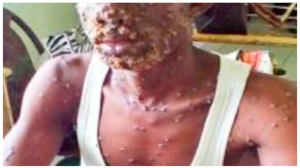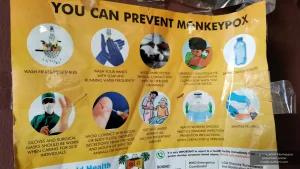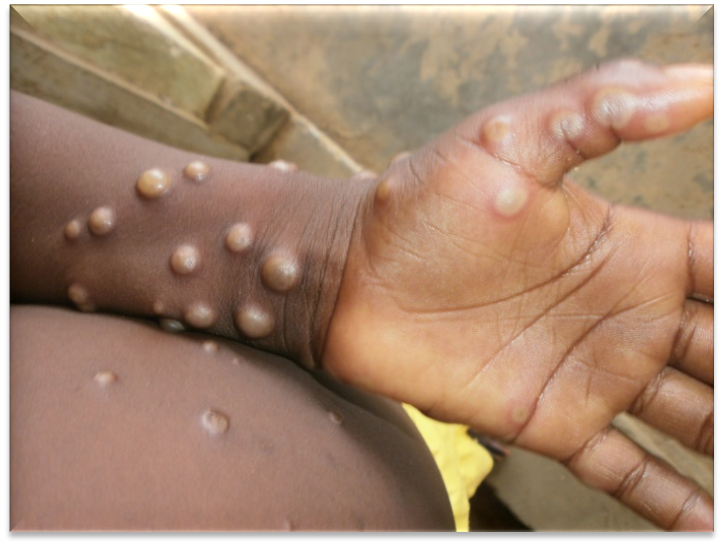Understanding Monkeypox: Symptoms, Causes, and Prevention of Mpox
Monkeypox Unmasked: Unveiling the Mysteries Behind Symptoms, Spread, and Survival
Mpox, a disease often shrouded in mystery and fear, is one of those rare infections that can cause a wave of concern across the globe. You might have heard about it recently or perhaps you’re curious about what it entails. Either way, this article will delve into the nitty-gritty details of Mpox, breaking down its symptoms, causes, and the ways you can prevent it.
What is Mpox?
Mpox, also known as monkeypox, is a viral disease that falls under the umbrella of zoonotic infections, meaning it can jump from animals to humans. First identified in monkeys in the late 1950s, hence the name, the virus was later found to affect humans as well. While the name might invoke images of primates, Mpox is actually more closely related to smallpox, a virus that was eradicated decades ago.

Mpox is part of the Orthopoxvirus genus, which also includes smallpox and cowpox. While smallpox was once a global scourge, Mpox is typically less severe but still requires serious attention. Unlike smallpox, Mpox has not been eradicated, and outbreaks continue to occur, particularly in Central and West Africa. Understanding the differences and similarities between these viruses helps in comprehending how Mpox operates and spreads.
Symptoms of Mpox
The initial symptoms of Mpox can be deceptive, often mimicking the flu. Individuals may experience fever, headaches, muscle aches, and a general sense of fatigue. Lymph nodes might swell, which is a key differentiator from smallpox. These early signs are your body’s way of alerting you that something is amiss.
As the virus progresses, more distinctive symptoms begin to appear. A rash often develops, starting on the face before spreading to other parts of the body. The rash evolves into raised bumps filled with clear fluid, which then turns into pustules. Eventually, these pustules scab over and fall off, completing the infection cycle. This entire process can take anywhere from two to four weeks.

Causes of Mpox
Mpox spreads primarily through direct contact with an infected animal or person. This can happen via bodily fluids, skin lesions, or respiratory droplets. Handling contaminated objects, such as bedding or clothing, can also lead to infection. While the disease isn’t as easily transmissible as the flu or COVID-19, close contact with an infected person increases the risk significantly.
Certain groups of people are more at risk of contracting Mpox. Those living in or traveling to areas where the virus is endemic are at the highest risk. Additionally, people who work closely with animals, such as veterinarians or wildlife workers, are also more susceptible. Immunocompromised individuals may experience more severe symptoms if they contract the virus.
Diagnosis of Mpox
Diagnosing Mpox often begins with a clinical examination. Doctors will look for tell-tale signs such as the characteristic rash and swollen lymph nodes. A detailed medical history, including any recent travel or animal contact, can provide crucial clues to identifying the disease.
To confirm a diagnosis, laboratory tests are necessary. A sample from a skin lesion or fluid from a pustule is typically collected and tested for the presence of the virus. Polymerase Chain Reaction (PCR) testing is the most reliable method, allowing for the detection of the virus’s DNA. Blood tests may also be conducted to rule out other conditions.

Treatment Options for Mpox
While there is no specific treatment for Mpox, antiviral medications used to treat smallpox, such as Tecovirimat, have shown some efficacy against the virus. These antivirals can help reduce the severity of the disease, especially when administered early in the infection.
Supportive care is crucial for those infected with Mpox. This involves managing symptoms through hydration, pain relief, and treating any secondary infections that may arise. Isolation is also recommended to prevent the spread of the virus to others.
Although home remedies cannot cure Mpox, they can provide relief from symptoms. Oatmeal baths, for instance, can soothe the itching caused by the rash. Maintaining a balanced diet and staying hydrated are also important in supporting the body’s immune response.
Prevention of Mpox
Vaccination remains one of the most effective methods of preventing Mpox. The smallpox vaccine offers some cross-protection against Mpox, given the similarities between the two viruses. In areas where Mpox is endemic, vaccination campaigns are crucial in curbing outbreaks.
Public health measures play a vital role in preventing the spread of Mpox. Educating the public about the risks, transmission, and symptoms of the virus can lead to early detection and isolation of cases. Quarantine measures, safe handling of animals, and proper hygiene practices are also essential in reducing the risk of transmission.

Mpox in the Modern World
In recent years, Mpox has made headlines due to outbreaks in various parts of the world. These outbreaks often prompt a swift response from global health organizations, including the World Health Organization (WHO). Containment efforts include isolating infected individuals, contact tracing, and providing healthcare workers with the necessary protective equipment.
Also Read: One dies as Nigeria records 41 cases of monkeypox
Research into Mpox is ongoing, with scientists striving to better understand the virus and develop more effective treatments. The focus is on improving diagnostic methods, exploring potential vaccines, and understanding the virus’s behavior in different populations. As our knowledge grows, so too does our ability to combat this disease more effectively.

Conclusion
Mpox, while less known than other viral diseases, is a serious health concern that requires attention. Understanding its symptoms, causes, and preventive measures is crucial in mitigating the impact of the virus. With ongoing research and public health efforts, we can hope to reduce the frequency and severity of Mpox outbreaks. Staying informed and prepared is our best defense against this and other emerging diseases.
FAQs
Can Mpox be fatal?
Mpox can be fatal, particularly in severe cases or among immunocompromised individuals. However, with proper medical care, most people recover fully.
Is there a vaccine for Mpox?
Yes, the smallpox vaccine provides some protection against Mpox. Vaccination is recommended for those at high risk, especially in areas where Mpox is common.
How long does it take to recover from Mpox?
Recovery from Mpox typically takes 2 to 4 weeks. The severity of the symptoms and the individual’s overall health can affect recovery time.
How can I prevent getting Mpox?
Prevention strategies include getting vaccinated if you’re at risk, practicing good hygiene, avoiding contact with infected individuals, and handling animals carefully, especially in areas where Mpox is common.
Is Mpox contagious?
Yes, Mpox is contagious, especially through direct contact with infected individuals or contaminated objects. Respiratory droplets can also spread the virus, though close contact is usually required.












